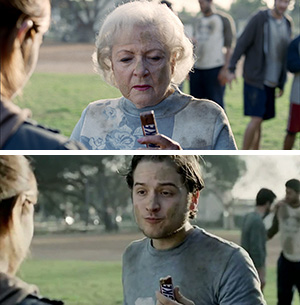How iSleep Leveraged AI Scoring for HSATs to Improve Access to Care
Welcome back to the EnsoData blog for another sleep story, this time jumping into the growing world of home sleep apnea testing (HSAT), and how one Nevada sleep center is always focusing on the patient experience with the help of AI scoring for HSATs. For this feature, we were excited to connect with a pair from the iSleep Home Sleep Solutions team: John Hickok, RPSGT, CEO & Founder, and Brenton Urick, iSleep’s Project Manager. What really stands out from both men is their population health approach to the obstructive sleep apnea (OSA) epidemic in the U.S. and globally. For iSleep, their population health approach is driven by three simple goals: improve access to care, reduce healthcare costs, and improve patient outcomes. Hickok noted that in the face of COVID-19, this approach is more important than ever. “As a remote sleep solution, we were able to expand access to care, as we saw brick and mortar sleep centers across the nation were forced to close their doors,” Hickok said. Growth during this pandemic is not easy to accomplish, and for iSleep, the use of AI Scoring for HSATs has buoyed their business efforts. Let’s dive in to see what makes their team tick.Guiding Patients through the Sleep Disorder Journey
When asked what makes their HSAT operation unique, Urick highlighted two primary elements to success: unparalleled customer service and a commitment to analytics and technology. Hickok doubled down on this sentiment, noting that the front line of the customer service team is their sleep coaching squad. “Our sleep coaches hold the patient’s hand every step of the way from screening and testing to treatment and compliance.” This “hand holding” strategy, where the team will walk patients through the initial HSAT kit set-up all the way to the follow-up PAP education and support is becoming more popular as the COVID epidemic continues and winter approaches. It’s also important to hold that patient’s hand because they’re often completely in the dark about what to expect.“We’ve found it is necessary because sleep apnea is heavily under-diagnosed and a lot of people simply don’t know about it. But they’re also very scared initially because it is a life-threatening disease. And so, we prioritize making sure they understand every step of the process,” said Urick.This commitment to educating patients is the primary focus for everyone, but especially for their customer service team.
Unparalleled Customer Service

Just as you might not be yourself when you’re hungry, as Betty White displayed in this Snickers Super Bowl commercial, not getting enough sleep is just as likely to lead to a less than 100% version of yourself.
“We place a huge emphasis on the patient experience,” said Hickok. “We’ve taken an expensive, time consuming, and uncomfortable medical procedure and turned it into a retail experience with obsessive customer service.”And as they will bend to meet the needs of each customer, the iSleep team is willing to adapt to the constant changes of the sleep industry.
Adaptability and Innovation Driven by Analytics
The iSleep team serves a diverse group of patients, and catering to the needs of each individual is crucial. As a budding start-up, Urick highlights the importance of personalizing the care journey for each patient. “We work on what our clients want and need, from processes to specific settings to the specifications each individual client might want,” said Urick. His team has a technology focused approach, and their affinity for technology allows them to be pioneers in the field. For many patients, the home sleep testing experience is simply more convenient. While iSleep has noticed this trend among their HSAT focused population, health systems and large private sleep clinics alike are seeing an increase in digital demand, especially as COVID has forced many people into considering telemedicine on a larger scale. According to our own research on the impact COVID-19 had on sleep centers, the epidemic has been very hard on the PSG market. When the crisis first hit, 72 percent of the surveyed professionals said their PSG lab was forced to shut down. However, for HSATs, adoption rates have grown in the wake of more emphasis on sleep in the wearables market. As more consumers are understanding their sleep patterns and how it affects their health, more people than ever will be considering sleep as a primary piece to their personal health. Ultimately, iSleep’s use of technology and analytics are focused on the OSA issue. The team is currently building out a dashboard to leverage predictive analytics among their patient population. For instance, their team is looking at the intersection of BMI, neck size, and age to determine OSA likeliness. They’re working with regional data points, identifying average AHI of a certain region, and how that may pertain to individual patients.“We’re trying to make it easier for a doctor to have the right data at the time of the initial evaluation, to help explain the likelihood of a patient having OSA,” said Urick. “And we’re trying to get that access into every physician’s hands because a lot of doctors aren’t asking their patients about sleep apnea. So, we’re working with our clients to better identify potential sleep apnea patients earlier in the process and at the general health screenings,” said Urick.As with scoring, AI technologies may be the solution in the screening process, as well. Time will tell. If you want to learn more about our EnsoSleep waveform AI Scoring for HSATs … dive into the two minute clip below. Read past sleep stories featuring technicians, sleep management teams and small clinics in our monthly series:






